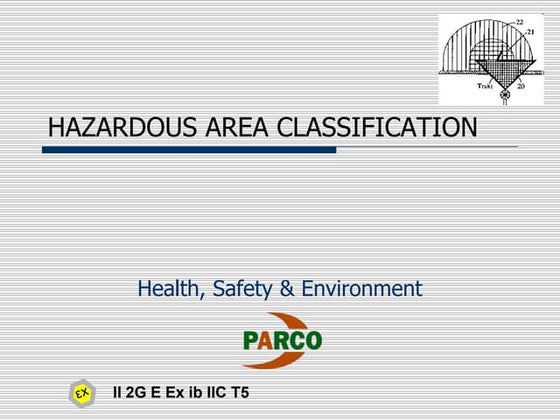The Facts About Roar Solutions Uncovered
The Facts About Roar Solutions Uncovered
Blog Article
Some Of Roar Solutions
Table of ContentsGetting The Roar Solutions To WorkRoar Solutions Things To Know Before You Get ThisSome Known Incorrect Statements About Roar Solutions
In order to safeguard installments from a prospective explosion a method of analysing and classifying a possibly unsafe area is called for. The purpose of this is to make sure the correct option and installment of equipment to ultimately stop a surge and to guarantee safety and security of life.
(https://www.dreamstime.com/thomascarrillo4740_info)
No equipment must be installed where the surface area temperature of the equipment is more than the ignition temperature level of the provided hazard. Below are some typical dust hazardous and their minimum ignition temperature. Coal Dirt 380C 225C Polythene 420C (thaws) Methyl Cellulose 420C 320C Starch 460C 435C Flour 490C 340C Sugar 490C 460C Grain Dust 510C 300C Phenolic Material 530C > 450C Aluminium 590C > 450C PVC 700C > 450C Soot 810C 570C The chance of the threat existing in a concentration high enough to create an ignition will vary from place to place.
In order to categorize this danger an installment is split right into areas of threat relying on the quantity of time the hazardous is present. These areas are referred to as Areas. For gases and vapours and dusts and fibres there are three zones. Zone 0 Area 20 A hazardous atmosphere is very most likely to be existing and might exist for long periods of time (> 1000 hours each year) or also continuously Area 1 Area 21 A harmful environment is possible however not likely to be existing for extended periods of time (> 10 450 C [842 F] A category of T6 indicates the minimal ignition temperature is > 85 C [185 F] Harmful location electrical devices possibly developed for use in greater ambient temperatures. This would certainly suggested on the ranking plate e.g. EExe II C T3 Ta + 60C( This indicates at 60C ambient T3 will not be exceeded) T1 T1, T2, T3, T4, T5, T6 T2 T2, T3, T4, T5, T6 T3 T3, T4, T5, T6 T4 T4, T5, T6 T5 T5, T6 T6 T6 A T Class score of T1 indicates the maximum surface temperature generated by the instrument at 40 C is 450 C. Assuming the associated T Class and Temperature level rating for the devices are proper for the location, you can always make use of an instrument with a much more rigid Division score than required for the area. There isn't a clear response to this inquiry regrettably. It truly does depend upon the kind of devices and what repair work require to be performed. Tools with particular examination procedures that can't be performed in the area in order to achieve/maintain 3rd party score. Should come back to the manufacturing facility if it is before the equipment's solution. Area Fixing By Authorised Worker: Difficult screening might not be called for nevertheless details procedures may need to be complied with in order for the equipment to maintain its 3rd event rating. Authorised workers have to be utilized to perform the work properly Repair have to be a like for like replacement. New part have to be taken into consideration as a direct replacement calling for no special screening of the equipment after the fixing is full. Each item of devices with a hazardous score need to be evaluated separately. These are described at a high level below, however, for more detailed information, please refer straight to the guidelines.
Little Known Facts About Roar Solutions.
The tools register is a comprehensive data source of here devices records that consists of a minimum collection of fields to identify each thing's area, technical parameters, Ex category, age, and environmental data. The proportion of Thorough to Close examinations will certainly be determined by the Tools Danger, which is evaluated based on ignition threat (the likelihood of a source of ignition versus the chance of a flammable atmosphere )and the harmful area category
( Zone 0, 1, or 2). Applying a robust Risk-Based Inspection( RBI )method is vital for guaranteeing conformity and security in managing Electric Equipment in Hazardous Locations( EEHA).
8 Easy Facts About Roar Solutions Shown

In terms of eruptive danger, a harmful area is an environment in which an eruptive environment is present (or may be anticipated to be existing) in quantities that call for unique safety measures for the construction, installment and use equipment. high voltage courses. In this write-up we check out the challenges faced in the workplace, the risk control actions, and the called for proficiencies to function securely
It issues of modern life that we manufacture, save or take care of an array of gases or fluids that are deemed combustible, and a variety of dusts that are regarded combustible. These compounds can, in specific conditions, develop eruptive environments and these can have significant and heartbreaking repercussions. Most of us recognize with the fire triangular get rid of any one of the 3 elements and the fire can not take place, yet what does this mean in the context of hazardous areas? When breaking this down right into its simplest terms it is essentially: a mix of a specific amount of launch or leakage of a certain substance or material, blending with ambient oxygen, and the visibility of a resource of ignition.
In the majority of circumstances, we can do little about the levels of oxygen airborne, yet we can have considerable influence on resources of ignition, as an example electrical equipment. Unsafe locations are recorded on the unsafe location category drawing and are determined on-site by the triangular "EX-SPOUSE" sign. Here, among various other essential details, areas are divided into 3 types depending on the hazard, the likelihood and period that an eruptive environment will exist; Zone 0 or 20 is considered the most dangerous and Zone 2 or 22 is regarded the least.
Report this page